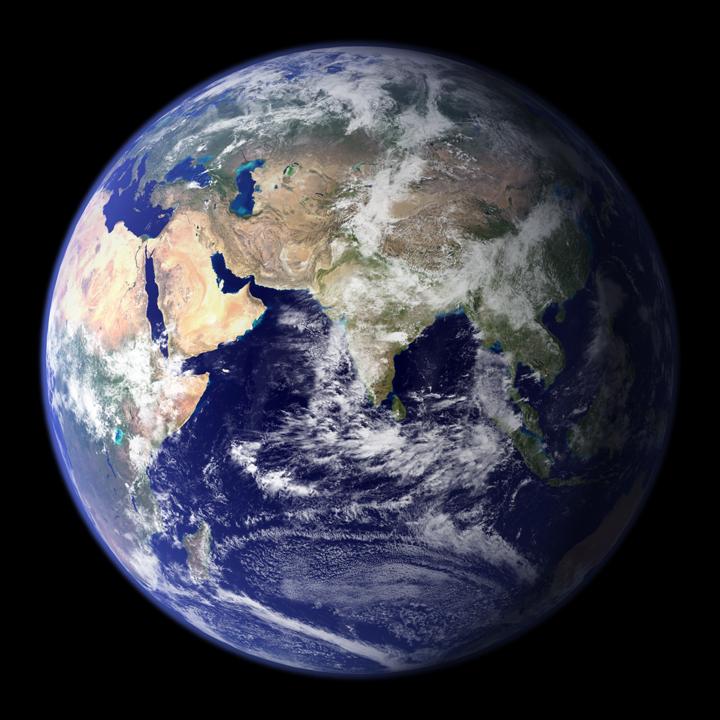Maya calendar predicts change in era
Courtesy photo: NASA / Goddard Space Flight Center
Opinion – The World
December 21, 2012
It has been more than 5,000 years since the current Mesoamerican Long count calendar began, and citizens all over the world are making sure the calendar term goes out with a bang. Throughout the world social media sites will saturate Friday, Dec. 21, with prophecies of the world ending because of a refinement one civilization made to the Mesoamerican calendar.
Dec. 21, 2012 is the end of the 13th bak’tun in the Maya calendar, significant not because of the date on the Gregorian calendar, but because Dec. 21 is the winter solstice. Winter solstice is the time period when the sun is at the lowest altitude in the Northern hemisphere and the highest altitude in the Southern hemisphere. The alignment of events within the Maya calendar with astronomical periods is one of the reasons that some people find the end of the 13th bak’tun so chilling.
However, Hector Avalos, professor of philosophy and religious studies and biblical scholar, is not holding his breath.
“The most reliable predictions are those that declare that the world will not end,” Avalos said. “Those who have predicted that the world would end on a particular day, month or year have been 100 percent wrong. That is the type of track record that should make anyone feel certain that the world will not end on Dec. 21.”
The Maya people believed that the end of the current era of earth would cease at termination of the 13th bak’tun, and a new one would emerge with the 14th bak’tun. Each bak’tun is 144,000 days long with the Maya Long Count Calendar lasting 5,125 years.
Yearning for a new world, although predicted by the Maya calendar, is also welcomed by other religions.
“Other reasons for believing in apocalyptic prophecies can include despair about the current condition of the world, and so a yearning for its destruction and/or replacement by something better,” Avalos said.
Despite the gloom and doom surrounding the ending of the Maya Long Count, some groups see the beginning of the 14th bak’tun as the beginning of a new era of transformation.
“[Dec. 21, 2012] has taken on a great deal of significance to millions of spiritual seekers all over the planet,” said a new age website that believes the ending of the 13th bak’tun will bring more good than harm. “Several ancient cultures prophesied the coming of a new golden age that will cause an evolutionary leap in human consciousness – a shift into a new amazing reality defined by peace, love, compassion and connection to our divine source.”
Regardless of the meaning that the winter solstice or ending of the 13th bak’tun gives to each person, Avalos is unmoving in his belief that the sun will rise to Dec. 22.
“The world will not end on Dec. 21, 2012,” Avalos said. “I guarantee it.”
About the Maya people
Although the Maya people are best remembered for their calendar predicting the end of the world, the Maya civilization was one of the most advanced of its kind in South America. Attempts to conquer the Maya people took conquistadors nearly two centuries, and the Maya civilization spanned about 3,000 years.
Historians remember the Maya civilization and look fondly on it for its accomplishments in art, architecture and astronomy. The Maya also developed an advanced writing system and kept records meticulously until its colonization by the Spanish in the 15th and 16th centuries. Although Maya literature is limited and safely guarded, the calendar system refined by the Maya people is both unlimited in the scopes of imaginations applied to its interpretation.
Series of calendars
Unlike the Gregorian calendar, the calendar used in Western culture consisting of 365 days in 12 months, the Maya calendar is a collection of calendars.
The Short Count calendar consists of the Tzolkin and the Haab. The Tzolkin consists of 13 days that go through 20 cycles to be 280 days long. Likewise the Haab is a 365-day calendar that consists of 18 months that last 20 days each, as opposed to the Gregorian calendar which has 12 months that last usually 30 or 31 days apiece. The ending of the Haab is a series of five days called the Wayeb, which is considered an unlucky time period. During Wayeb the Maya people would avoid misfortune by not leaving their houses or avoiding washing and cleaning.
The Maya people also had a calendar observing Venus, which lasted 584 days. The Maya people believed that war occurred most often in periods when Venus is either the evening or morning star.

















